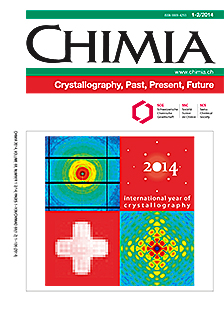Solving the Structures of Polycrystalline Materials: from the Debye-Scherrer Camera to SwissFEL
DOI:
https://doi.org/10.2533/chimia.2014.19Keywords:
Crystal structure analysis, Crystallography, Polycrystalline materials, Powder diffraction, Synchrotron radiationAbstract
The development of powder diffraction (PD) techniques for structure analysis is traced from its inception almost 100 years ago to the present day, with a brief glimpse of what SwissFEL can contribute in the near future. Although PD data were used in the early days to deduce some simple high-symmetry structures, it was not until computers, instrumentation and synchrotrons arrived on the scene that the true potential of PD data could be realized. In the last 25 years, PD has blossomed into a viable method, not only for structure refinement, but also for structure solution. This means that scientists with polycrystalline materials that cannot be grown as single crystals can still obtain the structural information they need. Historically, structure solution from PD data began with model building, progressed through the application of single-crystal methods to simpler structures and the adaptation of those methods to the special problems posed by PD data, the development of automated model-building algorithms, and most recently to the application of charge flipping. As X-ray sources and detectors continue to develop, the boundary between a powder and a single crystal is narrowing. Laue microdiffraction techniques and the prospects offered by SwissFEL will allow single-crystal data to be collected on some polycrystalline materials.Downloads
Published
2014-02-26
Issue
Section
Scientific Articles
License
Copyright (c) 2014 Swiss Chemical Society

This work is licensed under a Creative Commons Attribution-NonCommercial 4.0 International License.
How to Cite
[1]
Chimia 2014, 68, 19, DOI: 10.2533/chimia.2014.19.







